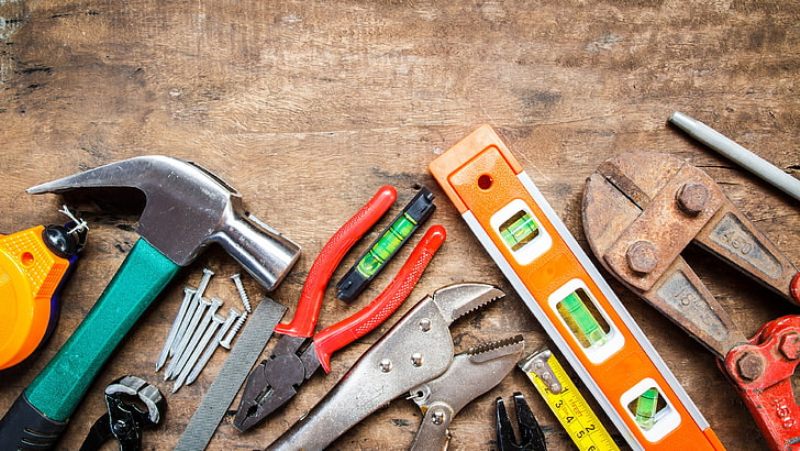
Material For Hand Tools
The tools that we use are always evolving. In the early time, our ancestors used the tone, branches. And then, people understand how to use the metal and make it. And then, people use it to make more and more different tools and weapons to handle all kinds of situations of life. The metal hand tools began to change human life. The widely use of metal hand tools pushes the improvement of agriculture and industry.
Hand tools make human life become more and more easily. There are so many types for hand tools right now. Such as the hammer, grater, pliers, saw, wrench, screwdriver and more. So it makes so huge impact for our life, we should know what it is material and what is it made of to understand it.
There are two types of material for hand tools. They are alloy steel and carbon steel.
Carbon Steel

There are three types of carbon steel, due to different carbon content. They are low-carbon steel, medium-carbon steel, high-carbon steel.
The carbon element content is less than 0.25% of low-carbon steel. It has great plasticity, toughness and good cold working formability.
The grade of it is 15#, 20#, 25#.
Medium-carbon steel’s carbon element content is on the range of 0.25% – 0.60%. It has high strength and plasticity and toughness, but the weldability is bad. The grade of it is: 35#, 40#, 45#.
Finally, the high-carbon steel has high carbon element. The content is bigger than 0.60%. Also, its strength, hardness and plasticity are good. After quenching and medium temperature tempering, its elasticity will get raise. The grades of it are: 60# and 65#.
Alloy Steel
In order to improve the properties of steel, people add one or several alloy elements base on carbon steel, then the alloy steel come out.
And different alloy elements will cause different impacts on steel properties.
The worker of steel factory will use the chromium to raise the hardenability, strength, wearability of steel. And the steel will get great oxidation resistance, at the same time, the plasticity and toughness will get impact to be lower.
The vanadium element will improve the toughness of steel.
And the molybdenum can raise the toughness and counter bending ability of steel.
Manganese can decrease hardness, strength, hardenability and abrasive resistance of steel.
Alloy Steel Applications

Low alloy structural steel has higher strength and toughness due to the effect of alloying elements, better process performance, low production cost and wide application. Mostly used directly, often used in railways, bridges, ships, automobiles, pressure vessels, often used as welding structural parts and mechanical components.
Other low-alloy steels include ordinary quality, high-quality, special-quality low-alloy steels. These steels are also special steels that need to be produced for each special production. High-quality steels that can be welded with low-alloy high-strength structural steels include low-alloy steels for boilers and pressure vessels for shipbuilding, automobiles, bridges, and bicycles; as well as special-quality nuclear energy, pressure vessels, ships, and weapons , Low-alloy steel to ensure performance in the thickness direction.
Alloy Steel Grades
ASTM: D2 steel, D3, A2, O2, O1, H21, H10, H11, H13, P20 and more.
GB: Cr12, Cr12Mo1V1, Cr5Mo1V, 9Mn2V, 9CrWMn, 3Cr2Mo, 3Cr2NiMo, 42Crmo4 and etc.
People must understand what tools are they really need, then choose the best one according to the material. The material will influence the hand tools.




